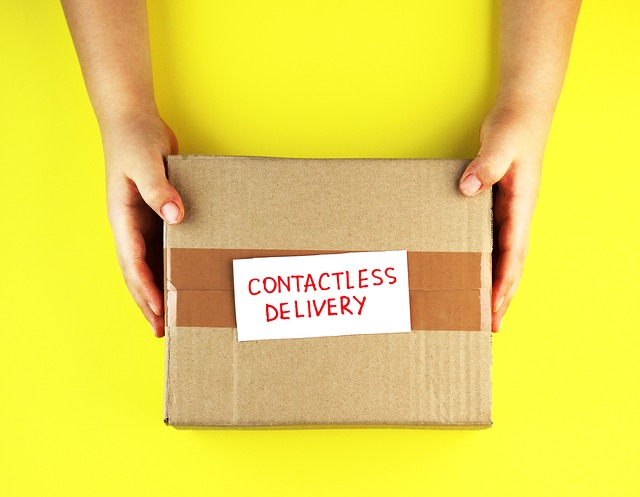Contactless curbside collection: safety and convenience for clothing care
Contactless curbside collection offers a way to manage garments without direct handoffs, combining hygiene practices with convenient pickup and dropoff logistics. This approach reduces in-person interactions while keeping fabric care standards intact, letting households schedule wash and delivery windows, track items via apps, and choose subscription or one-time services for apparel maintenance.

Contactless curbside collection reshapes routine clothing care by letting customers hand over garments outside homes, offices, or designated dropoff points without face-to-face exchange. This first-paragraph overview explains how contactless processes use scheduled pickup, digital tracking, and hygienic handling to maintain fabriccare standards while minimizing risk. Many services pair app-based scheduling with clear labeling and sealed bags so items move through wash and delivery channels with traceable steps.
How does contactless curbside pickup work?
A typical contactless curbside pickup begins when a customer schedules a pickup through a website or mobile app and prepares garments in approved bags or containers. Drivers then collect items at an agreed curbside location, scan or photograph the dropoff, and upload tracking details to the system. On return, the dropoff follows similar steps, with sealed packaging and electronic confirmation. This process reduces person-to-person contact and streamlines logistics for both local services and larger operators.
Operational details may vary by provider, but common elements include scheduled windows, labeled bundles for different fabriccare needs, receipts sent by text or email, and options to leave items at a specific doorstep or lobby area. Clear communication about pickup zones helps drivers complete routes efficiently while respecting customer preferences.
What safety and hygiene measures protect garments?
Hygiene in contactless delivery centers on safe handling, appropriate detergents, and drying or disinfection steps tailored to fabric types. Providers typically separate heavily soiled items from regular apparel, use recommended detergents and water temperatures for different garments, and follow handling protocols to keep staff and customers safe. Sealed packaging after the wash reduces the chance of recontamination during transport.
Staff training is essential: using gloves when sorting, proper hand hygiene, and sanitizing work surfaces are standard practices. For sensitive fabrics, fabriccare instructions are followed closely to avoid damage while maintaining cleanliness.
How can scheduling and tracking improve the wash cycle?
Scheduling tools let customers pick convenient pickup and dropoff slots, reducing missed collections and improving route planning for providers. Tracking features — including status updates, timestamps for pickup, wash, and delivery, and photographic proofs — provide transparency about where garments are in the process. This visibility is useful for managing subscriptions or one-off orders.
When schedules are consolidated into optimized routes, providers can lower delivery times and reduce carbon footprint. For customers, tracking reduces uncertainty and helps plan around the return of essential apparel, such as workwear or seasonal items.
Are subscription and delivery options suitable for apparel care?
Subscription plans often appeal to households seeking regular wash and garment care without repetitive scheduling. Monthly or weekly subscription tiers typically include bundled services like standard wash, delicate cycles, and regular pickups. These options suit families, professionals with frequent laundry needs, or those who prefer a predictable cadence for fabriccare.
Subscriptions can include customization — specifying detergent type, water temperature preferences, or special handling for delicate garments. Combining subscription plans with contactless curbside collection creates a steady, convenient supply chain for clothing care while maintaining consistent hygiene standards.
How does ecofriendly logistics affect detergent and processing?
Ecoeffriendly approaches encourage lower-temperature washes, concentrated or plant-based detergents, and efficient route planning to reduce emissions. Choosing detergents formulated for energy-saving cycles helps preserve fabric life while lowering environmental impact. Providers implementing ecofriendly logistics frequently sort loads to maximize machine efficiency and avoid unnecessary resource use.
Beyond detergents, greener logistics may include reusable garment bags, consolidated deliveries, and partnerships with recycling or repair services to extend the usable life of apparel. These practices align convenience with sustainability goals for customers and service operators.
What should local services offer for reliable curbside collection?
Local services should provide clear scheduling options, digital tracking, and flexible pickup/dropoff arrangements tailored to community needs. Key features include secure labeling for different garment types, transparent fabriccare instructions, and options for detergent preferences. Reliable providers also communicate ETA updates and maintain sanitation protocols for staff and items.
Additional benefits may include seasonal care packages (e.g., winter coat cleaning), special handling for delicate or specialty fabrics, and the ability to accommodate one-time or subscription clients. Ensuring straightforward logistics and responsive customer support helps local services build trust around contactless curbside collection.
Contactless curbside collection combines practical scheduling, careful fabriccare, and modern tracking to keep garments clean while minimizing direct contact. When providers balance hygiene protocols, ecofriendly practices, and clear communication, customers receive convenient delivery and pickup experiences that preserve apparel quality and support efficient logistics.






